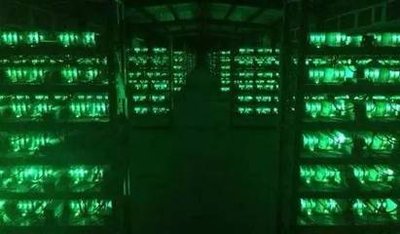In the ever-evolving world of cryptocurrencies, ASIC mining machines stand as a testament to the relentless pursuit of efficiency and profitability. If you’re planning to dive into the depths of crypto mining, navigating through the myriad of options to evaluate ASIC mining machine prices becomes an imperative task. But how does one determine if a particular mining rig is worth the investment? Factors such as hash rates, power consumption, and market trends play pivotal roles in this evaluation.

To start, understanding hash rates is crucial. A hash rate defines the speed at which a mining machine can attempt to solve cryptographic puzzles, and it is the key metric for determining mining profitability. Generally, the higher the hash rate, the more likely you are to mine cryptocurrencies successfully. This translates into greater potential returns. However, this boost in performance often comes at an increased price—both for the machine itself and for the energy required to operate it.
Next, let’s turn our attention to power consumption, another critical element impacting the overall cost of mining operations. Mining machines, particularly ASIC miners, can consume significant amounts of electricity. Evaluating the price of electricity in your region is essential; an ASIC miner with a high hash rate may become unprofitable if energy costs are excessively high. Thus, an understanding of the power-to-performance ratio can ultimately guide your investment decision.

The current market trends and the fluctuating value of cryptocurrencies like Bitcoin (BTC), Dogecoin (DOG), and Ethereum (ETH) are also key factors to consider. The mining landscape is not static; it evolves with technology, regulations, and market demand. A machine that once represented a solid investment may fall prey to advancements or shifts in mining difficulty. Therefore, staying informed about the latest updates and price movements is critical in evaluating long-term viability.
Moreover, warranties and support offered by manufacturers can significantly impact the lifetime cost of a mining rig. A robust support system can save miners from unexpected downtimes and potential losses. Evaluating the reputation of different brands and understanding their after-sales policies could mean the difference between a good purchase and a regrettable investment.
Another aspect worth weighing is resale value. The technology behind ASIC miners evolves rapidly, which can cause older models to depreciate quickly. Factors such as performance, market demand, and the release of newer, more efficient models need to be considered. If you plan to upgrade your machinery in the future, understanding how resale value changes over time can provide you with an edge.

<pLastly, don’t forget to evaluate hosting options. If home mining seems too complex or costly concerning electricity and infrastructure, hosting services can present an excellent alternative. These facilities typically offer optimized arrangements designed to maximize equipment efficiency. The hosting service can handle electricity, cooling, and maintenance, allowing you to focus solely on your mining operations without the headache of managing every detail.
In conclusion, weighing the price of ASIC mining machines involves multiple factors ranging from technical specifications, energy consumption, warranty offerings, and market dynamics. By blending this analytical approach with real-time market insights, miners and investors can make informed decisions that align with their goals in the cryptocurrency space. So arm yourself with the right information and dive into the world of ASIC mining with confidence!